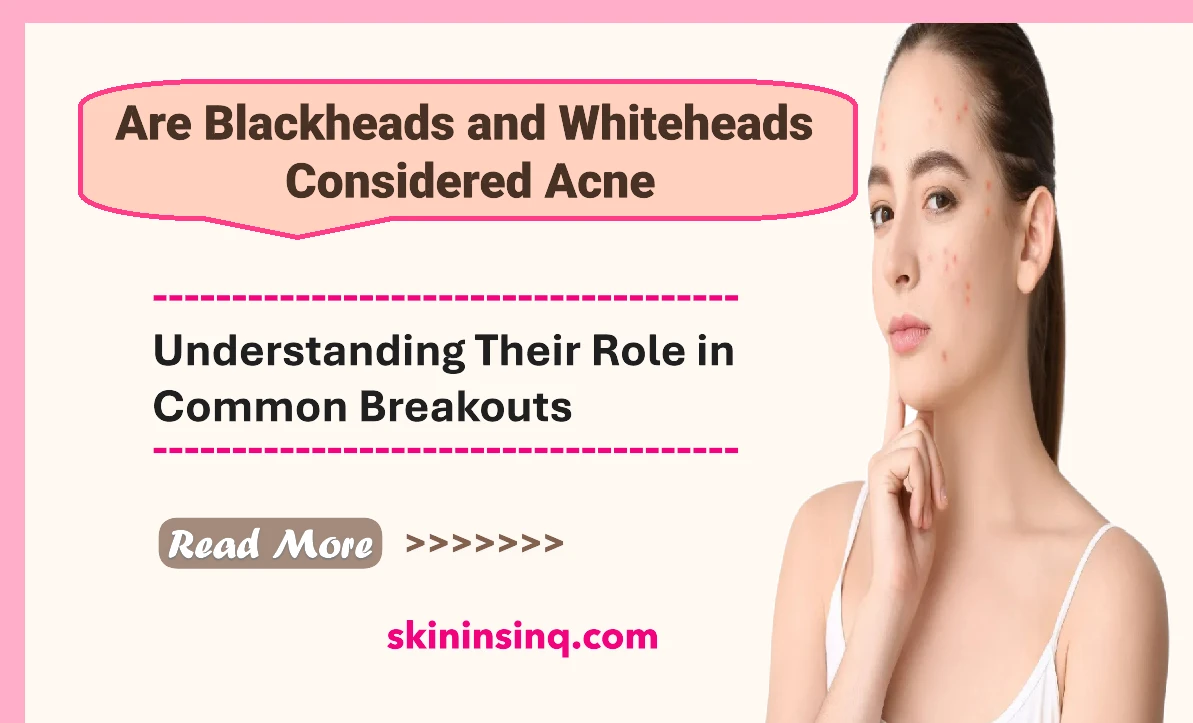Are Blackheads and Whiteheads Considered Acne? Understanding Their Role in Common Breakouts
Are Blackheads and Whiteheads Considered Acne? Understanding Their Role in Common Breakouts
Blackheads and whiteheads are two of the most common types of skin blemishes, often appearing during adolescence but also persisting into adulthood for many people. These small bumps can show up on the face, back, chest, or shoulders, leading many to ask: are blackheads and whiteheads actually considered acne? The short answer is yes—they are both classified as forms of acne, specifically non-inflammatory acne. Understanding how they form and how they differ from other types of acne can help in managing and preventing breakouts effectively.
What Are Blackheads and Whiteheads?
Blackheads and whiteheads are both types of comedones, which occur when hair follicles become clogged with oil (sebum), dead skin cells, and sometimes bacteria.
-
Blackheads (Open Comedones): These appear as small dark spots on the skin, usually in areas with a high concentration of oil glands like the nose, chin, or forehead. The dark color is not dirt but the result of oxidation—when the contents of the clogged pore are exposed to air, they darken.
-
Whiteheads (Closed Comedones): These are small, flesh-colored or white bumps that remain closed at the surface. Because they are sealed by a thin layer of skin, they do not oxidize and therefore remain white or skin-colored.
Why They Are Considered Acne
Acne is a broad term that encompasses a range of skin blemishes caused by clogged or inflamed pores. This includes:
-
Non-inflammatory acne: Blackheads and whiteheads.
-
Inflammatory acne: Papules, pustules, nodules, and cysts, which are red, swollen, and often painful.
Both blackheads and whiteheads are early-stage acne lesions. If not treated properly, they can progress into inflammatory acne. This is why skincare professionals often focus on treating comedones early, to prevent the development of more severe breakouts.
Causes and Contributing Factors
The formation of blackheads and whiteheads is influenced by several factors:
-
Excess sebum (oil) production
-
Hormonal fluctuations, especially during puberty, menstruation, or stress
-
Build-up of dead skin cells that clog pores
-
Certain cosmetics or skincare products (comedogenic ingredients)
-
Poor cleansing habits or failure to remove makeup
-
Genetics, which may affect pore size and oil production
Treatment and Prevention
Because blackheads and whiteheads are part of the acne spectrum, treating them effectively often requires a consistent skincare routine:
-
Salicylic acid helps exfoliate inside the pores and is effective for comedones.
-
Benzoyl peroxide can help prevent bacteria buildup and is often used alongside other treatments.
-
Retinoids (like adapalene or tretinoin) are vitamin A derivatives that promote cell turnover and prevent clogged pores.
-
Non-comedogenic products are important for reducing pore blockages.
Regular cleansing, exfoliation, and avoiding pore-clogging products are key to keeping comedones under control.
Conclusion
Yes, blackheads and whiteheads are considered forms of acne—specifically, non-inflammatory acne. While they may not be as severe or painful as other types of breakouts, they are part of the same skin condition and can evolve into more serious blemishes if left untreated. Recognizing their role in the acne process is essential for developing a proper skincare strategy and achieving clearer, healthier skin.

Related Blog
Can People with Dry Skin Also Have Acne? Understanding Breakouts Beyond Oily Skin Types
Aug 2, 2025 by Admin
General Acne
What Causes Oily Skin and Can It Be Managed Naturally? Exploring Root Causes and Gentle Solutions
Aug 2, 2025 by Admin
General
Does Popping Pimples Always Make Acne Worse? The Risks and Realities of Squeezing Breakouts
Aug 2, 2025 by Admin
General Acne
Do Oily Foods Make Pimples Worse? Uncovering the Truth Behind Diet and Breakouts
Aug 2, 2025 by Admin
General Acne